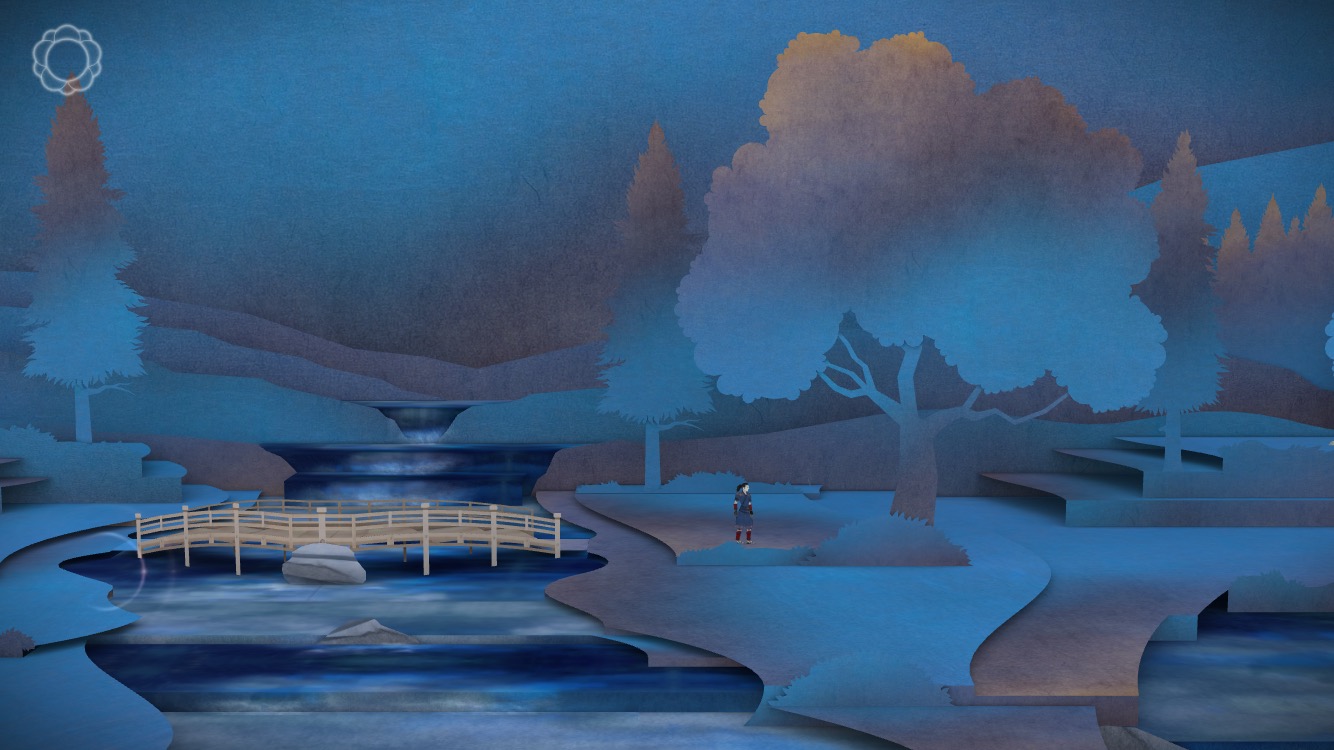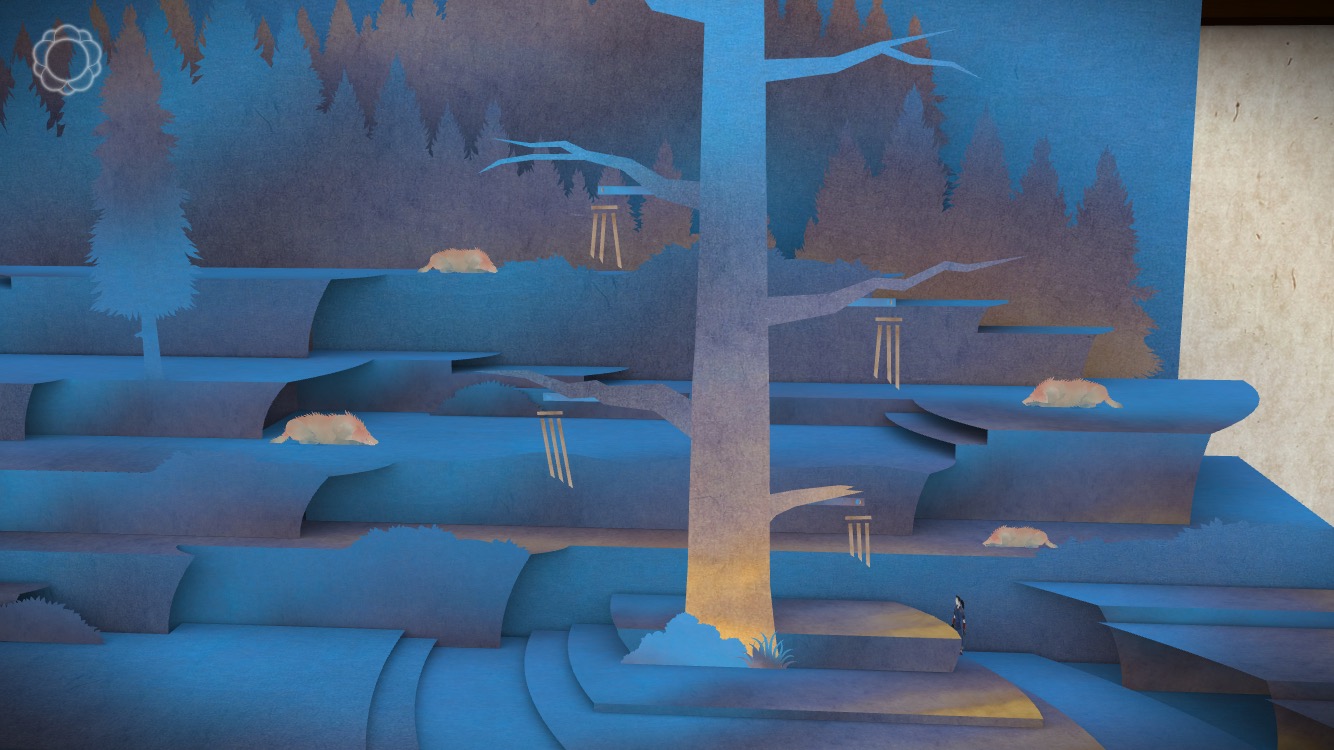For this Critical Play, I played Tengami, a game by Nyamyam whose target audience is people aged 12 and up.
I was immediately struck by this game’s unique concept: it is set inside a Japanese pop-up book, and you play as a small paper character on a quest for pink flowers. As you move through the pages of the paper world, you discover new areas and items by swiping pieces of paper to turn them over. In the first scene, for instance, you must cross a paper river by turning over a piece of the river to reveal a bridge (Figures 1 and 2).


Tengami is one of the most beautiful games I have ever played. The color scheme is elegant and clean. Only a few colors are used per scene; between scenes, the colors change from light blues, grays and yellows to deeper blues and purples (Figures 1 and 2, for instance, occur earlier in the game, whereas Figure 3, which has deeper colors, occurs later). This creates the feeling of the night deepening. Once I understood that time passing could be causing the color scheme to change, I felt even more immersed in the world because I felt that I had unlocked a new piece of its logic. The soundtrack is also beautiful; it is gentle and deep, which matches the visual design well. The combination of the visual and audio design create a strong Sensation aesthetic within the game. It also bolsters the game’s Discovery aesthetic because it is not cumbersome to explore such a beautiful, coherent world in order to find its puzzles.

Moreover, Tengami’s puzzles complement its visual and audio aesthetics perfectly. For instance, in the first puzzle in the game, you must click on four wind chimes in order from lowest to highest pitch (Figure 4). All four wind chimes emit rich, calming sounds that are never discordant with the background music.

Some puzzles involve more discovery than problem-solving. In one section, for instance, you must get into the lower level of a building by walking around the world and discovering entrances to underground tunnels. There are no puzzles to solve here; you only need to explore until you come across the tunnels. These discovery-based puzzles decrease the Challenge aesthetic of the game (which is nevertheless present because the game does include smaller-scale puzzles to solve, like the wind chimes), but adds to the Discovery and Sensation aesthetics of the game. That is, because you do not have to think so hard about how to solve the puzzles, you are free to simply wander the world and enjoy the music and intricate visuals.


